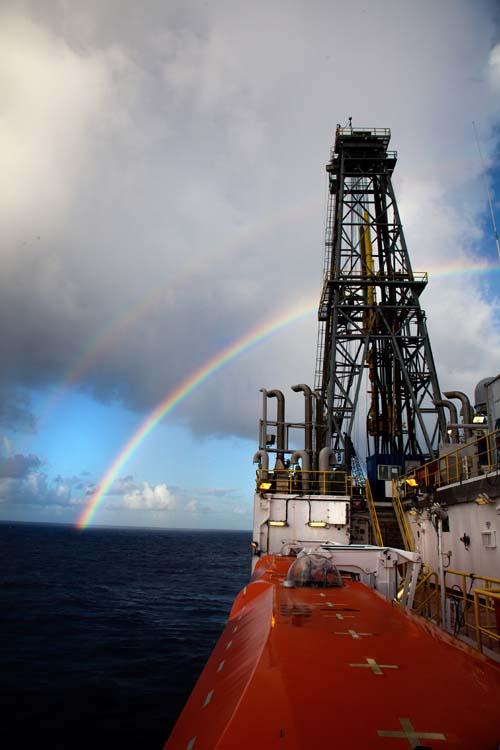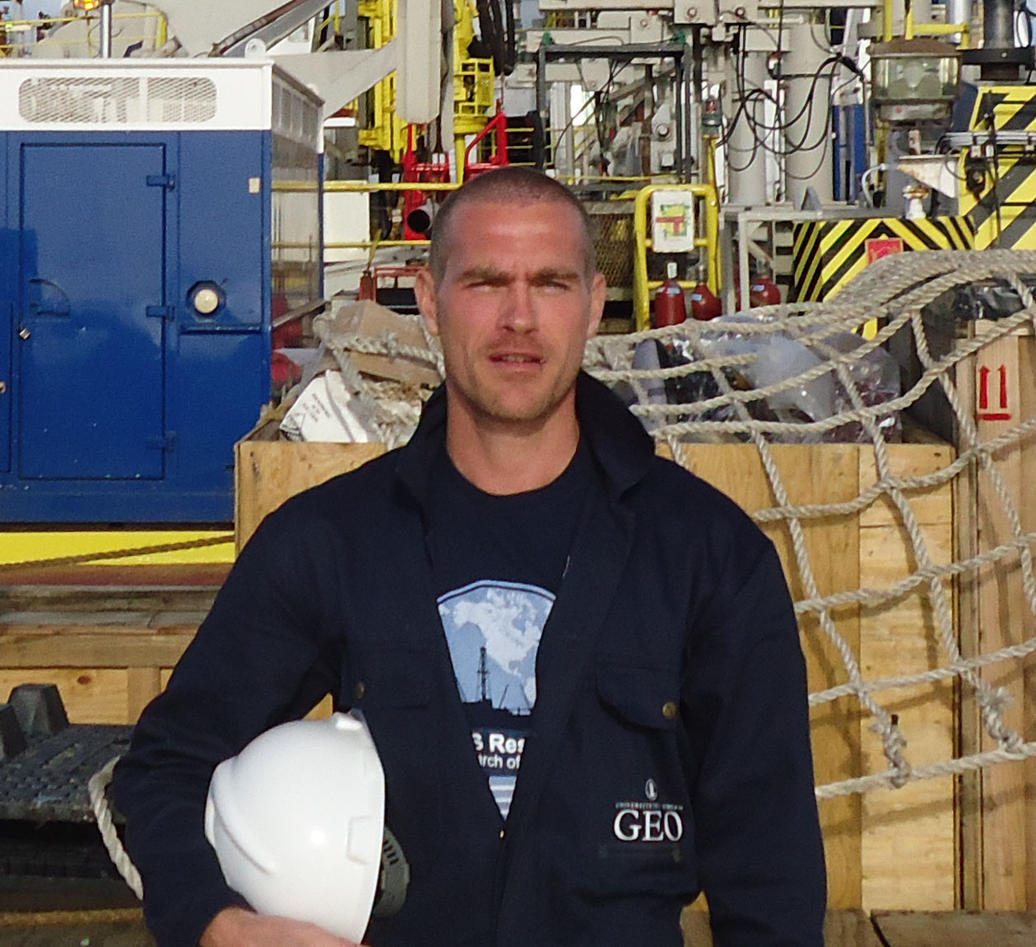IODP Eighth Report - Heading Home
Our scientist-at-sea, PhD student Steffen Jorgensen, aboard the JOIDES Resolution sends his last report: after 2 months at sea, he is heading home.

Hovedinnhold
After some pretty intense sampling days - to say the least (!) - we are now on our way to port in Ponta Delgado at the Azores.
The last week has been a sampling marathon, with everybody working long shifts in all labs. Sediment cores were on deck every hour and we barely finished sampling one before the next one was on the catwalk. In total we retrieved sediments from 4 holes all the way down to the sediment/basement interface.
The final core description and onboard analysis of the pore water finished late last night.
As I am writing this, it is early morning and the ship seems to have turned into a ghost ship compared to the last week’s hectic activity. All labs are empty and no one runs in the hallways anymore. Most people have already cleaned out their lab spaces and packed everything down in boxes to be shipped back to their home institutes.
Activity level is not the only thing that has changed around here, the weather has changed too. There is now a cool fresh breeze when I step outside and not this warm humid air anymore. It is a strong reminder that those off us going back to Europe will be met by early winter weather! I completely forgot how close we are to the end of the year but I guess the nice drawing of a Christmas tree I got from my daughter should have reminded me.
Overall the expedition has been a huge success; two successfully drilled holes for hard rocks, two CORKS deployed and four deep sediment cores. For my part this has resulted in no less than 210 samples that will be shipped to Bergen as soon as we reach port, and I am excited to get started processing the samples once I too am back in Bergen.
I will now go down in the gym and for one last time make an attempt to beat Wolfgang’s non-human rowing record. Looking forward to seeing you all back home in Bergen.
All the best!
Steffen
About the cruise. The Expedition Summary is quoted below:
"The top layer of the earth’s crust is full of cracks and fractures. Beneath the ocean, these networked cracks and fractures fill with water that flows through them as the ocean moves and changes. This type of watery network is called an aquifer, and the deep ocean crust contains the largest active aquifer on Earth. Living within this aquifer are all kinds of tiny lifeforms (microbes) that make their homes in this deep ocean landscape. But how many microbes are there? Are there different kinds? Where do they come from? How do they live, eat and move within this deepsea network? These are the questions that scientists onboard IODP Expedition 336: Mid-Atlantic Microbiology hope to answer. By installing three subseafloor observatories (“CORKs”) into the ocean crust, IODP scientists hope to gain new information that will help them understand what life is like below the ocean floor."
Check out the website to learn more.
IODP Expedition 336: Mid-Atlantic Ridge Microbiology Week 8 Report (6-12 November 2011)
Click here for more pictures.
Links relating to the cruise:
- Daily reports on IODP web site
- JOIDES Resolution web site
- Adopt a Microbe Project
- expedition 336 on Twitter (scroll down)

